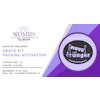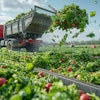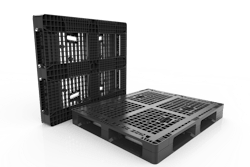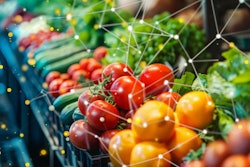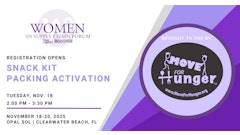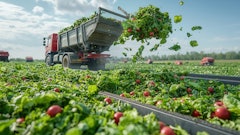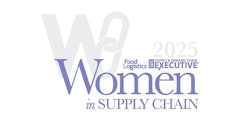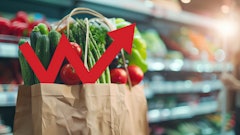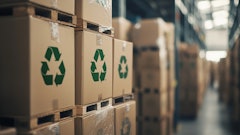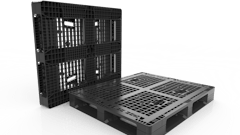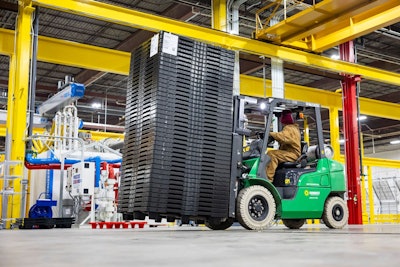
Many customers these days are focused on the future of their supply chain. Moving raw materials, ingredients and finished products within the supply chain efficiently and quickly is especially critical to today’s food manufacturers. And supply chain packaging, including pallets and boxes that don’t flow efficiently within a supply chain and can’t be consistently filled, stored, shipped, used or returned for replenishment and reused in a continuous cycle is a major challenge to building a circular food chain.
Companies, in response to this challenge, are moving away from single or limited-use products and considering more sustainable products. An example is converting from wood pallets, a more traditional choice, to reusable packaging that provides them with a longer packaging lifespan. Making this switch can drive measurable efficiencies for both you and your customers. But it’s a decision that shouldn’t occur within a vacuum.
Here are ways to gauge the business impact of reusable packaging.
Determining metrics and ROI
Metrics and a return on investment (ROI) are key to gauging if reusable packaging is aligned with your business and sustainability goals. Some companies use an EcoVadis score, a numerical ranking from 0 to 100, that gauges a company’s sustainability performance across four key areas: environment; labor and human rights; ethics; and sustainable procurement. Another is sharing savings realized through their sustainable packaging. Options like reusable pallets, bulk containers, and handheld containers that stand the test of time can positively impact your ROI, whether it’s through water reduction savings, food contamination savings, or supporting the quality of the food they produce.
When comparing single-use packaging with a more sustainable or multi-use product, you likely will notice an initial price difference. But it’s worth noting that corrugated boxes and wood pallets are built for one-time use. The disposal of corrugated and wood waste is costly in terms of disposal fees, along with non-value-added labor incurred for setup or breakdown. That’s why it’s incumbent on the organization to justify the total cost of ownership over the product’s life. Consider whether you’re seeing quality benefits that can be quantified. Many variables can go into your ROI calculation. These include increasing the number of turns on an asset; reducing downtime on your operations; being able to redeploy labor throughout your facility, and demonstrating the benefits to food safety, process part, or manufactured goods quality.
Quantifying reusable packaging in the automated systems world
Any incurred downtime is highly detrimental, especially within the automated systems world, whether it’s a warehouse inducting a fully automated racking system, warehousing technology, or even something simple like a conveyor system. As such, seek opportunities to quantify the use of reusable packaging like transferring pallet loads of product throughout or conveying product loads. Also consider quantifying moving away from a wood pallet with potential splinters or nails that could jam up a system and cause downtime.
There really is no type of product outside of plastic injection-molded containers that are conducive to robotics or highly automated systems. Cardboard or traditional products that are handled in cardboard lead to design or use inconsistencies, even if it's just water contamination or humidity, which pose a challenge, especially when you’re talking about very uniform loads or robotic handling of goods. It’s in these situations where reusable plastic packaging can really shine.
Accounting for multiple factors that impact a sustainable offering
Many different factors impact a sustainable offering like reusable packaging and it’s important to account for them when determining their potential business impact. Many people focus on environmental sustainability, which of course is important, especially as it relates to consumer product goods with high brand awareness. Yet there are other variables that drive a sustainable offering such as product longevity, total ownership cost, and product quality, which is a growing area of focus
Product quality refers to the quality and consistency of what our customers are producing and manufacturing, which is increasingly taking on a greater sense of urgency. It’s unfortunately difficult to go a week without seeing some form of a recall or alert on food contamination or foreign objects in packaged goods. This is where robust, and sustainable packaging comes into play to help mitigate some of that contamination. A plastic packaging platform that enables businesses to track and trace ingredients throughout the food supply chain is going to be even more critical during the next few years, as food safety remains a salient issue for our industry.
Ensuring you have a supply chain that can reuse products
Ensuring you have a supply chain that can in fact reuse products is another key factor in determining whether reusable packaging is right for your business. Many existing expendable package flows don’t need to account for the reclamation of getting a package back for reuse. So, you will need to determine if you can control a loop where you can return an asset. If you’re moving from a relatively inexpensive single-use packaging to a more robust type of reusable packaging, you will want to ensure you have a controlled loop so you can return the asset and capture the benefits of the ROI I noted earlier.
Ultimately, customers are looking for ways to help drive down costs throughout or improve efficiencies within their supply chain. A desire to move products throughout their supply chain with the highest levels of accuracy, product quality and efficiency lends itself well to reusable packaging; it’s a matter of ensuring key stakeholders are on board as you evaluate any type of conversion. Collaboration is important so consider bringing together internal and external stakeholders, including upstream suppliers and shipping partners, to determine how reusable packaging can be aligned with your sustainability and business goals. Have conversations that get everyone together and working toward similar goals to drive value for your company and end customer.


